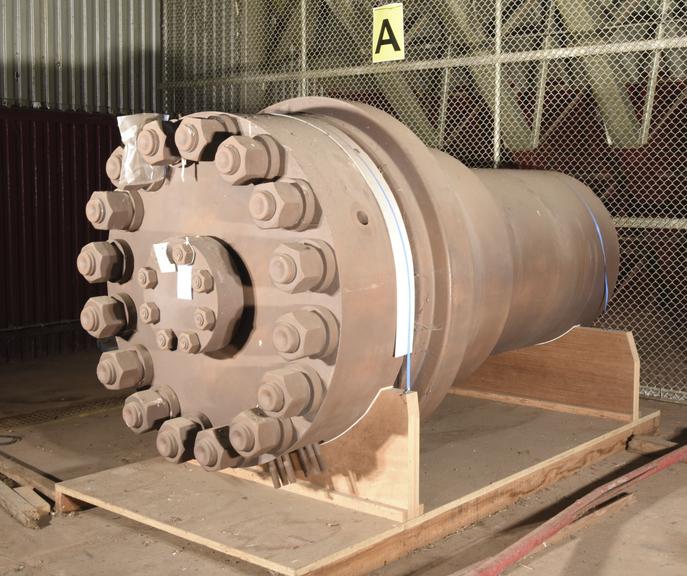
Replica of the Haber-Bosch Process Pressure Mantle, Original Used for Synthesing Ammonia, c1920
- PART OF:
- Haber-Bosch Process Pressure Mantle

Replica of Haber-Bosch pressure mantle built in 1920 by Krupp.
In the early 20th century German chemist Fritz Haber and German chemical engineer Carl Bosch developed an industrial method to convert atmospheric nitrogen into ammonia, which is perhaps the most important compound of the 20th century.
The so-called Haber-Bosch process was a hugely significant development, as it meant ammonia could be produced at scale, crucial for several industries, such as dyeworks, plastics, explosives and, most of all, agriculture – nitrogen in the form of ammonia is a key component of fertilisers. For his discovery, Fritz Haber and Carl Bosch were both awarded the Nobel prize.
The Haber-Bosch process was first applied to the industrial production of ammonia in 1913, when Baden Aniline and Soda Factory (BASF), the German chemical company who employed Fritz Haber and Carl Bosch, built the first ammonia compression plant in Ludwigshafen, Germany.
This specific pressure mantle was one of the first to be installed at the Ludwigshafen ammonia plant. Pressure mantles such as this one are key components in the ammonia plants as these are where atmospheric nitrogen and hydrogen would be compressed at high temperature and pressures to form ammonia. This incredible pressure was only contained by specialised steel which at the time could only be manufactured by German industrial giant, Krupp, who repurposed the barrels of its large artillery pieces to build the first Haber-Bosch pressure mantles.
The discovery and refinement of the Haber-Bosch is credited as being one of the most important developments in modern history, and one that go on to help define the 20th and 21st centuries. The biggest impact of the Haber-Bosch process was in the mass production of fertilizer, which in turn allowed for a sharp increase in the efficient production of food across the globe. At the beginning of the 20th century the population of the world was approximately 1.6 billion, today it is over 8 billion, and it would not be hyperbolae to attribute this tremendous century of growth in large part to the Haber-Bosch process. The Haber-Bosch process is quite literally woven into all modern humans, with roughly half of the nitrogen in each human today having been artificially created via synthetic ammonia compression plants across the world.
The Haber-Borsch process has had other far-reaching effects, notably by significantly increasing the amount of nitrogen in circulation in the global ecosystem which has led to the overall increase in the Ph of the globe through the increased presence of nitrates in the soil and water. Global ammonia production by humans has also contributed to the disruption of the natural nitrogen cycle which moves nitrogen through ecosystems in the land, sea and air. The intense energy requirements of the Haber-Bosch process have also significantly contributed to the global increase in fossil fuel burning and the consequently environmental changes being faced today, the process accounting for between 3-5% of the world total consumption of fossil fuels.
Details
- Category:
- Auxiliary Material
- Object Number:
- 1986-1289/2
- Materials:
- wood composites, fibreglass and polyurethane resin
- Measurements:
-
overall: 2950 x 1170 mm
- type:
- pressure vessels
- credit:
- BASF AG (W. Germany)


